To successfully develop the aviation industry, the airlines have discovered that flights need to be reliable. When aircraft were first used as people transports (because they were first used only to carry mail), the main problem was to sell the idea of getting there faster than by rail and not killing the clients. A lot of emphasis was put on the safety of the aircraft itself but nothing could be done for the strips they were landing.
I was doing a training session for a couple of ATS (Airport Technical Staff) a while ago and this question was asked: How were the first aircraft able to take off and land in the first days of aviation? I honestly couldn't answer as I didn't know anything about it, despite knowing the current Annex 14 of the ICAO (Internacional Civil Aviation Organisation), which is known to be the most important brick in Airport Design worldwide. We had to imagine a world without airport lighting and the gimmicks that local airports would have used to help aircraft find and land their aircraft in those early days.
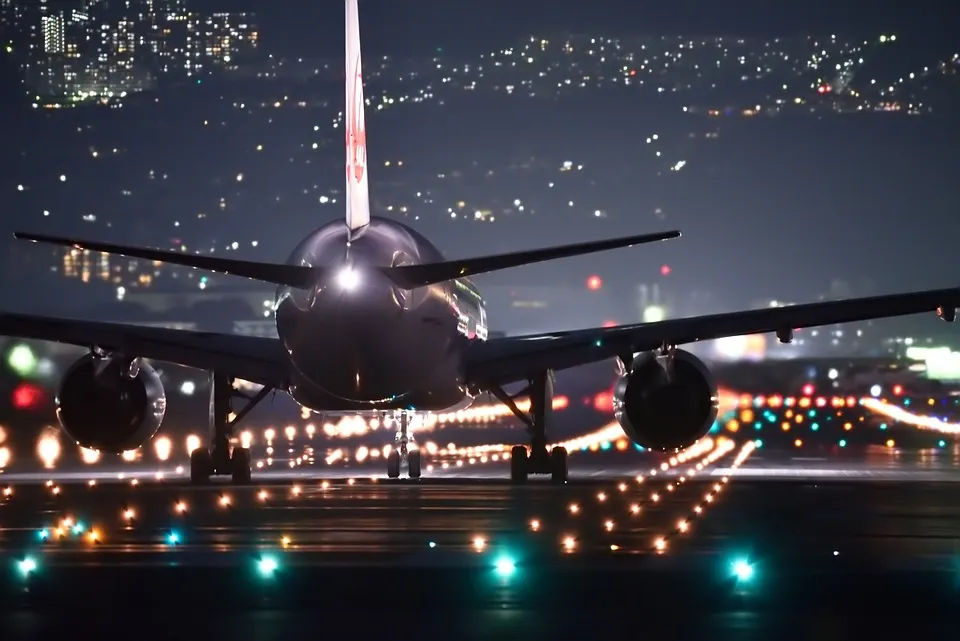
Airport with many of the lighting systems turned on. Stick for more explainations. Source is Pixabay, under Creative Commons.

First of all what is an ATS and how would this help people looking for jobs?
The Aviation Industry needs people, worldwide, especially in countries where the industry is just being developed. The airport technical staff or ATS is a trained group of people, often with graduate or postgraduate studies but not mandatory, who manage and keep the airports in operation. Improperly put, the handymen of the airports. Usually good pay, good working conditions (as good as working in a dangerous location with tons of fuel moving at very high speeds around you at all times can be), a perfect working place for those passionate about aviation. And future job prospects will surely be plenty, as the aviation industry is quickly expanding in all countries. The dream job, I would say.
Getting back to the issue of how the landings were achieved the answer is not clear even online. After 30 minutes of Internet searching the answers were evasive and this is why I decided to write this.
The first aircraft were taking off and landing on grassy fields, unmarked and with no lighting whatsoever. The flights were usually scheduled during daytime and no flights were made during the night or evening. The first flights in the US even had mid-way stops with hotels to sleep included in the ticket price. But the first landing lights are noted to have appeared in Cleveland, according to Wikipedia
As the flights became more and more popular, the systems have evolved, from simple search lights or beacons to signal the presence of an airfield to specific lights set up so that the aircraft could follow them to the landing strips.
Flying at night without any ground systems to guide you is almost impossible and many accidents have happened because of this, even without any bad weather being involved. One of the most notable is John F. Kennedy Jr. plane crash, which is still the examples used in most of the training manuals across the world and set the name of the situation, now knows as Spatial disorientation.
Physiologically, without any reference, the human body - the inner ear - cannot tell exactly if the pilot is flying level or not. Because of the different movements in an aircraft, thickness of air, winds and such, the inner ear is very quickly tricked. The pilot is often unable to distinguish if he is flying level or straight down.
Trying to land like this in the 30's when not all cities had sky-scrappers and billboards and the airports were not engulfed in huge lights would have been a terrifying experience, especially on a moonless or cloudy night.

Airport Lighting Systems - Is it really just to signal aliens?
Not quite, the systems are a well regulated set of rules, designed to standardize the airport operations during the night.
Since the 30's we now have paved landing strips, directional beacons and running lights. Let's take the most important lights in the order of seeing them as we land:
- Approach lights
- PAPI or VASIS
- Runway end identification lights
- Runway end lights
- Runway edge and centerline
- Runway touchdown zone
- Taxiway edge and centerline
- Apron lights
- Stopbars
Approach Lights - ALS
Probably the most known lights, especially when they light up in a sequence. They help the aircraft see the airport from afar and guide it towards the Runway touchdown zone. Extremely helpful in case of bad weather and especially fog. Upon descent, if the aircraft is not able to see these lights, the whole approach will be missed and the aircraft will either try a new approach or it will divert to another airport.
PAPI or VASIS
These are usually only seen from the aircraft cockpit and are a series of directional lights which are always on but visible in different configurations in relation to the approaching aircraft's elevation. For the PAPI system, a series of 8 lights grouped in a configuration of two by four, 4 white and 4 red. When the incoming aircraft is high above the glide path (the correct descent path of 3 degrees) all 4 lights will be white and as the aircraft gets lower, the aircraft will start to see the red lights. When on correct glide path, the lights should indicate two white and two red. Three of them red will mean a "too low" approach and all red light display corresponds with "way too low".
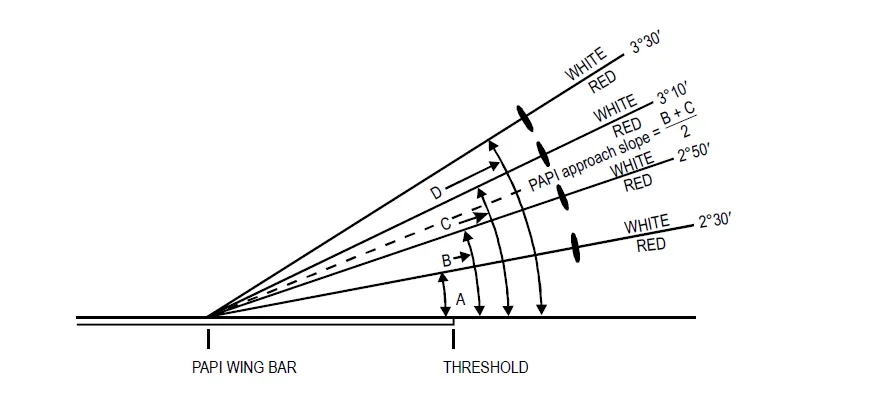
PAPI angles of visibility as viewed from the side - from the public ICAO - Aerodrome Design and Operations - Annex 14 Volume 1, which is worldwide industry regulation.
The VASIS or T-VASIS is another such system, maybe not as popular as PAPI because of the extra lights. The operating principle is the same though, being well under the glide path you will see red lights, and as you get close to the correct glide path you will only see the horizontal white bar.
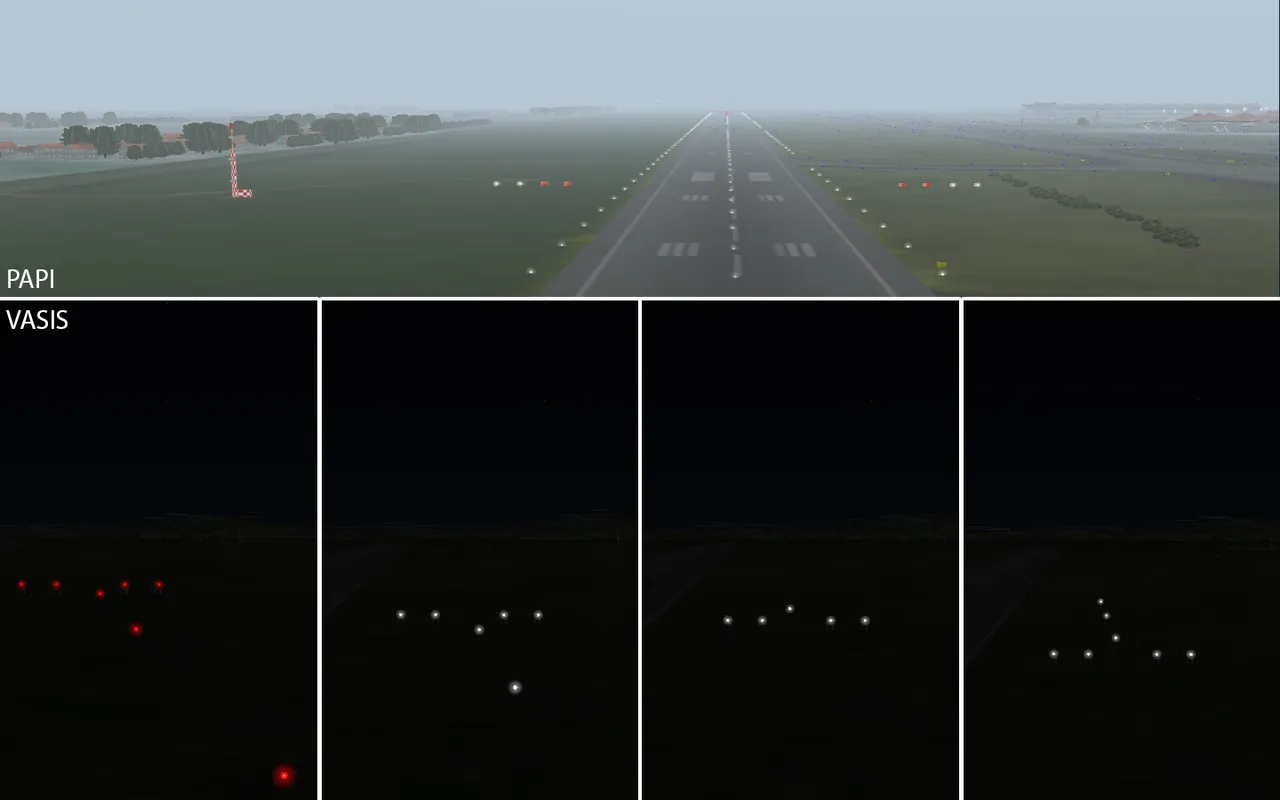
Screen capture of simulated approach systems as present in the ATC Simulator I help develop.
Runway end Identification lights - REIL
Two high intensity pulsating lights to signal where the paved and operational runway starts. Not being able to identify these lights and confirm it to the Air Traffic Controller will lead to a failed approach and a subsequent go-around.
Runway end lights
A series of directional red lights warning the pilot that the paved usable runway is ending so the pilot should leave the runway at the prior runway exit ramps.
Runway edge, touchdown zone and centerline lights
Probably another set of lights which you must have seen when you passed close to an airport, the runway edge lights are omnidirectional lights spaced at 60m. Usually available in different intensities to be used in different weather conditions and still be economical and reduce the glare when the weather is fine. The color is white or warm white and the touchdown zone lights are only present in the area where the aircraft aim to land.
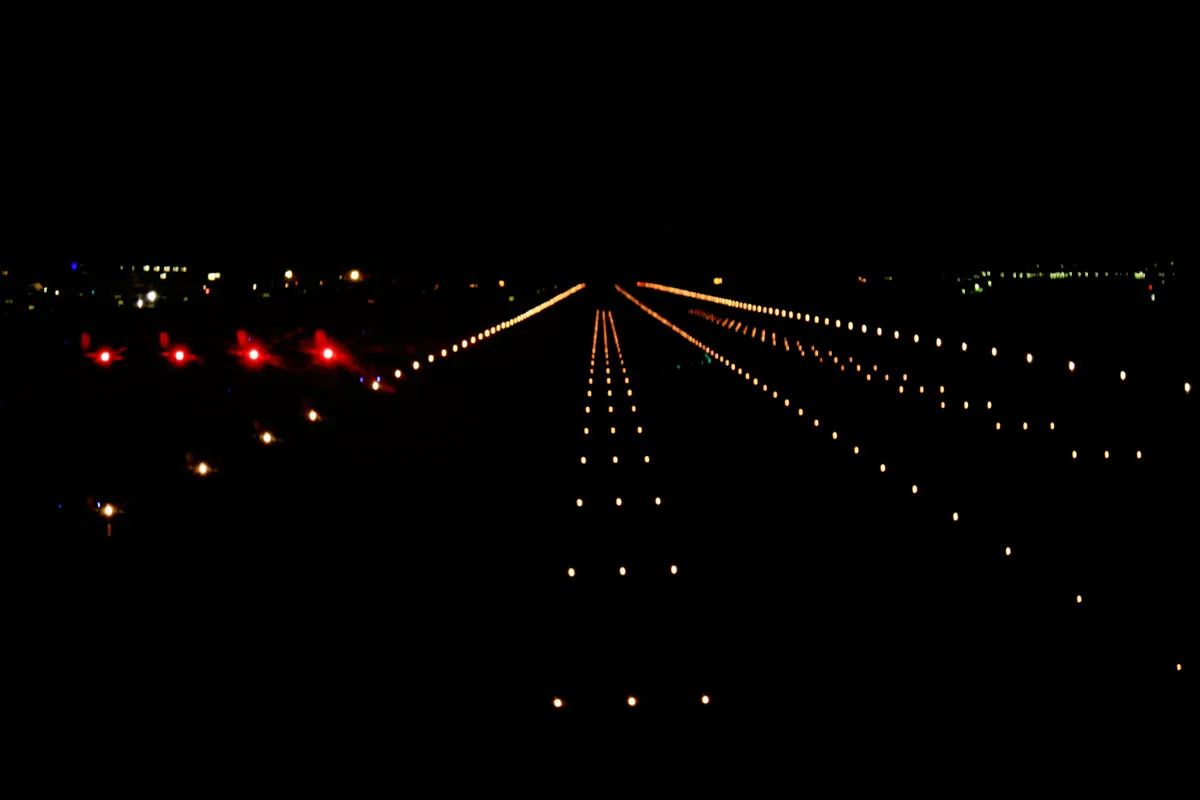
Exemplification of Runway edge, touchdown zone and centerline lights and even the red lights from the PAPI on the left. Source
The taxiway edge and centerline lights
The blue and respectively green lights, used by aircraft to move from the runways to the aprons. Having a much lower intensity than the runway lights, they are mostly invisible from the air. Spaced at 30m and in some turns even at 15m, they are usually unidirectional or bidirectional. Newer systems even turn the lights right in front of a moving aircraft and turn them off when the aircraft passes. This is done for collision mitigation purposes as any other aircraft will be alerted by the lack of centerline lights and will inquire the ATC about the operational situation.
Apron lights
A subset of taxiway lights, also in blue and with green centerline lights they are used on the aprons, the main operational surfaces in which aircraft and vehicles transport people and goods to and from the terminals.
Stopbar lights
Essentially the traffic lights of the airport. No aircraft will be allowed in an intersection without the express permission from the ATC. Stopbars are operated just like in the railway industry, always set on red by default and only shortly deactivated to allow each aircraft to move.

Blue lights are taxiway edge lights, green lights are centerlines, red lights are stopbars. Public image from ICAO Annex 14, linked before.

Airport lighting panel
In the Tower, there is always a specialized ATS, position either filled by one of the active controllers or as an independent position. This engineer will control the setup of the airport circuits and will handle any emergency regarding the lights. Further more, he can group and make presets and fast selections according to the local regulations.
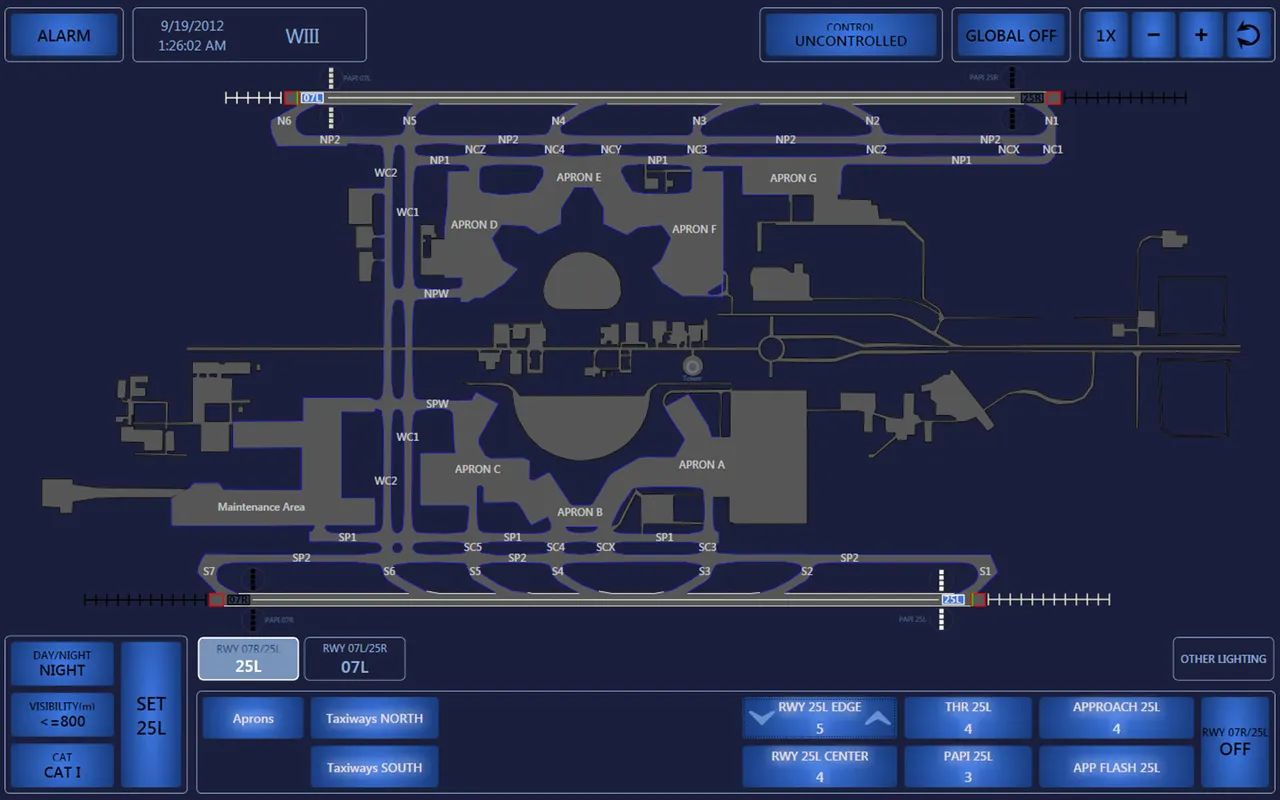
Example of an airport lighting panel. You can see the 07L and 25L runways both in use with all the approach systems active, while the opposite runways are closed to prevent simultaneous landings on the same runway. Screen capture from the project I work on.
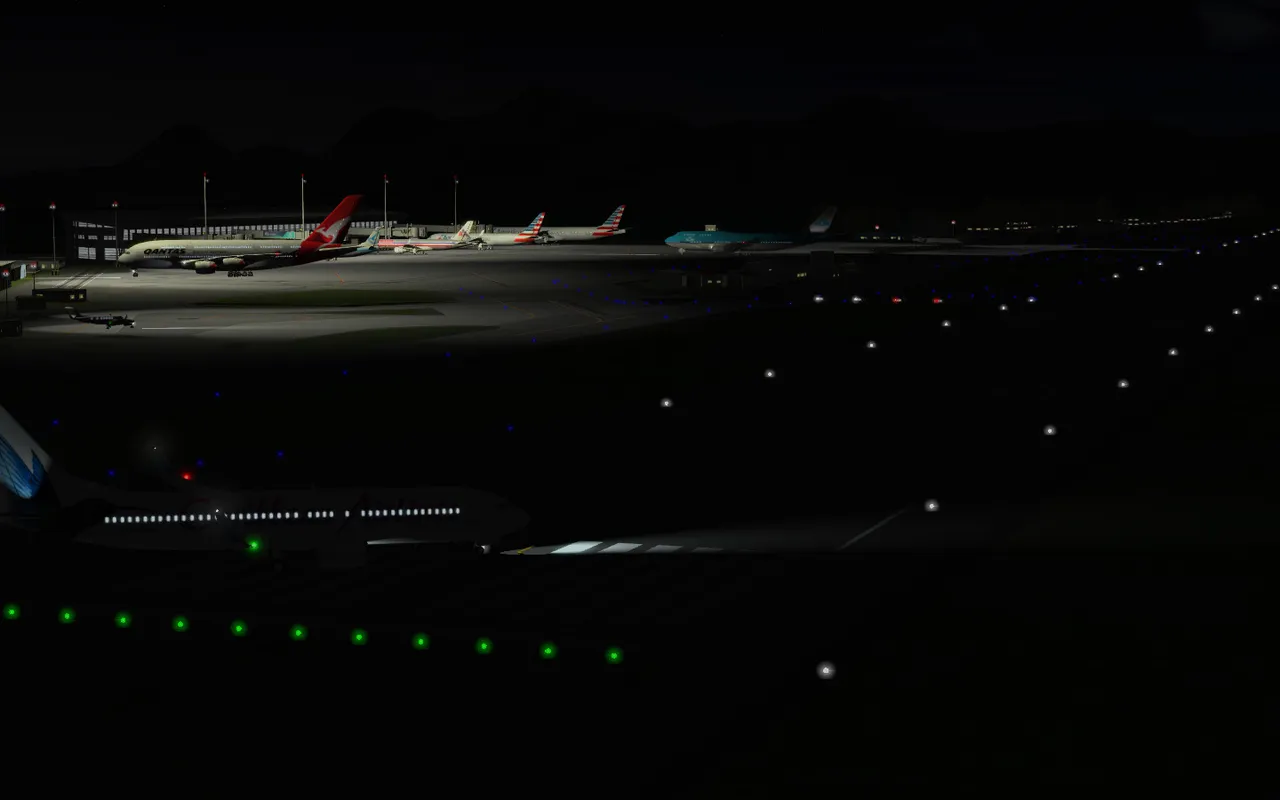
Night airport operation using lighting systems. Very different from how airports would have looked like in the 30's. The development of LED lights means that huge amounts of light can be cast on a huge surface without wasting power or overloading the networks. Screen capture from the ATC Simulator I am working on.

Sources and further reading
ICAO Annex 14 Volume 1
Wikipedia on Runways.
ATC Simulator on airport lighting.
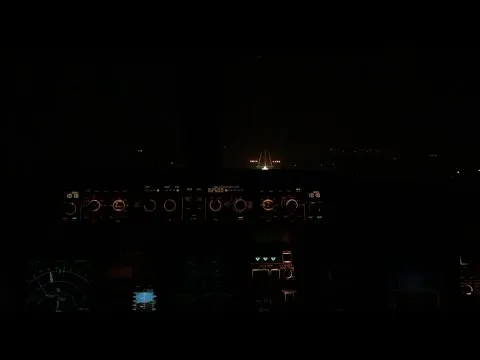
You can also take a look at how a landing at night looks like from the cockpit. Remember this is in good weather. Now try to imagine not having the lights for you as you do this. Video is Creative Commons and highly educative.

Conclusion
Airport lighting is the one thing that allows for aircraft operation 24/7 and also having a well trained, well prepared team of airport technical staff is key to continuously operating each airport. In case of lighting failures or malfunctions, a quick resolve is what makes the difference between having aircraft in a longer wait pattern while the problem is fixed and massive income losses associated with aircraft routing and then passenger transport, cancelled flights and such.
My final goal here is to make aviation jobs easy to understand and perhaps raise awareness to this wonderful industry and the often neglected aviation jobs.


Contribute STEM content using the #steemstem tag | Support SteemSTEM authors | Join our curation trail | Visit our Discord community | Delegate SP to SteemSTEM